In praise of Idleness…. NOT
Those of us interested in the performance of education systems broadly [at a professional or policy level] or perhaps those of us interested in the specifics of educational results [perhaps as a business-owner, looking for a skilled pool of workers or as a parent, concerned for the future of those most-dear] should equally be interested in two [somewhat juxtaposed] reports , the New Zealand productivity Commission’s report ” Productivity by the Numbers..” and the Council of Australian Government’s Reform Council [COAG] report on Education Performance in Australia over the last five years.
In a field of hotly contested ideologies and practical realities, it appears there is a lot to like about much of the specific performance of the mid-to-longer term efforts to improve intergenerational mobility amongst Australians. Of course, there is room for genuine concern, but the positive gains are the focus for today.
Simplistic public debates about skills, education, schools and/or universities, would do well to consider some of these trends. The educators are educating.
Education, skills and the ability to adapt to the realities of labour markets and skills needs are key challenges that we hear almost everyday, whether it be from Politicians, Business Leaders or Educators. The COAG report provides some insights in to the current performance of Education systems across Australia and what this means for the nation as a whole. It is also interesting to get a perspective from our “cousins across the ditch” and New Zealand’s Productivity Commission’s comparative assessment of the structural differences in the Australian and New Zealand economies.
Australian – New Zealand
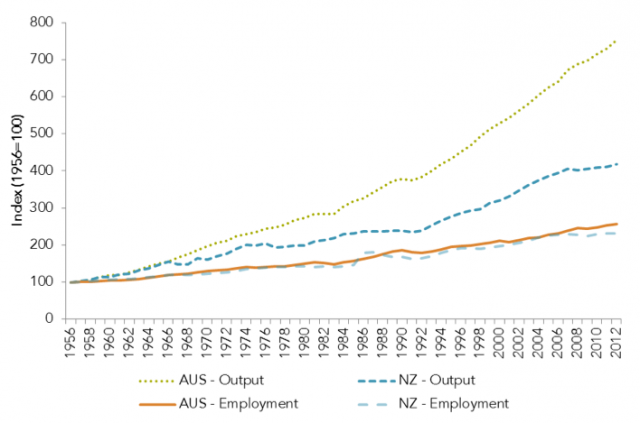
The New Zealand Productivity Commission reports notes:
New Zealand and Australia have had remarkably similar employment growth since the mid-1950s. But Australian firms have been much more successful than their New Zealand counterparts at converting that labour input into output
When we turn a little closer to home and look at the COAG report on the Education reforms of the last five years, we also find some key improvements.
Some of the key findings [at a National Level] suggest:
- Reading and numeracy are improving in the primary years but not in secondary
- More young people attain Year 12 but fewer are fully engaged in work or study after school
- Progress for Indigenous students appears slow and patchy
- Outcomes for students from the lowest socio-economic backgrounds still poor
The figures also suggest that historical inequalities are proving true to that description. They are historical inequalities that perhaps require resources and focus of an historic nature.
Equity – The long-tail challenge for policy makers and practitioners alike.
Between 2008 and 2012, the reading achievement of students in the lowest socio-economic group increased in Years 3 and 5 but declined in Years 7 and 9. Large gaps in achievement between low and high socio-economic groups remain in all year levels of testing.
Over the period 2006 to 2011, Year 12 attainment increased for the lowest socio-economic group to 73.7% compared to 93.3% for the highest socio-economic group. The gap between the two groups remained similar to that in 2006. There were greater improvements for the lower and middle socio-economic groups (quintiles 2 and 3). Year 12 attainment for both these groups increased by nearly 5 percentage points, to 81.9% and 85.8% respectively, reducing the gap with the highest group.
Those that are within the Local Learning and Employment Networks in Victoria would be pleased with some of these trends.
In 2011, after leaving school, 41.7% of young people from the lowest socio-economic backgrounds were not fully engaged in work or study, compared to 17.4% for young people from the highest socio- economic backgrounds. This gap widened between 2006 and 2011. [Source: COAG 2013]
Some of the key trends.
Year 12 Attainment
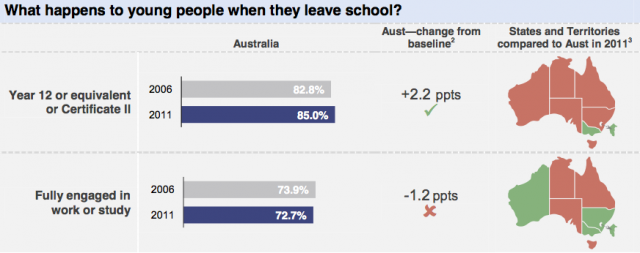
Literacy and Numeracy
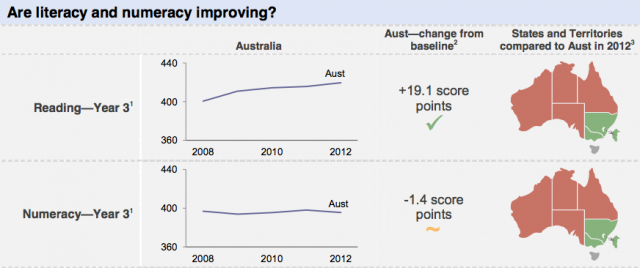
Victorian Trends
Victorian Year 12 Completers
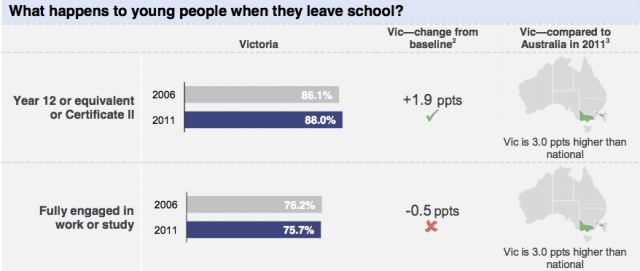
Victorian Indigenous Education Outcomes
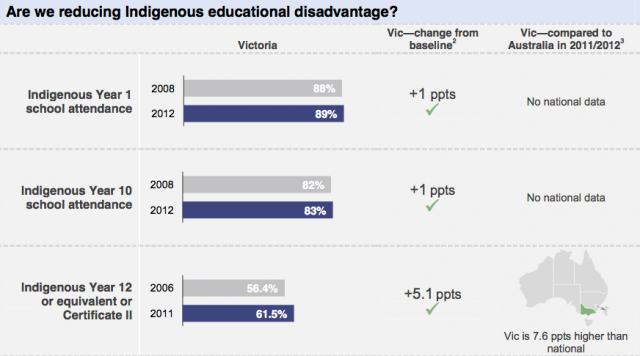
Links
- Productivity by the Numbers – New Zealand Productivity Commission
- Education in Australia – Five Year Performance – Council of Australian Governments Reform Council
- Working Hours – “Get a Life” – The Economist

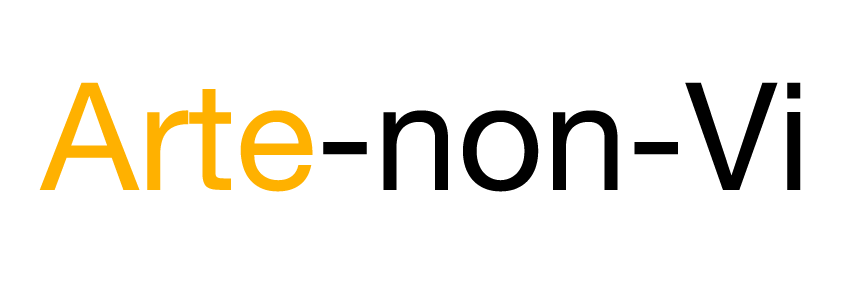
In praise of Idleness…. NOT – #Productivity and #Education Results in Australia – http://t.co/WitPjaiX6I #equity #oecd